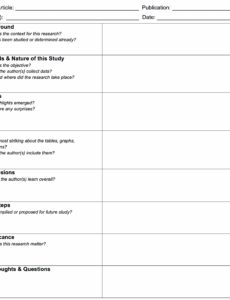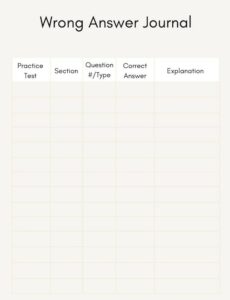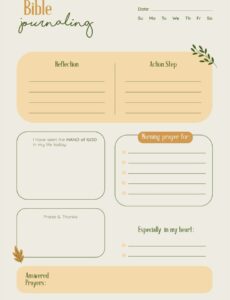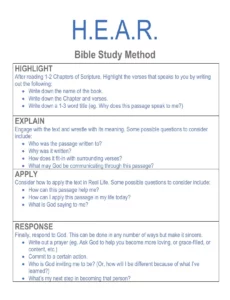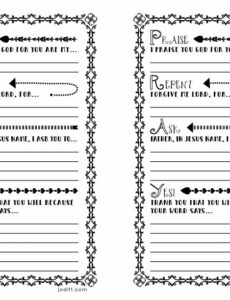Ever wondered why some days you feel full of energy, while others leave you feeling sluggish or unfocused? Our diet plays a monumental role in how we feel, both physically and mentally. Sometimes, we make food choices out of habit, convenience, or even emotion, without truly understanding the impact they have on our overall well-being. It’s easy to overlook small details that, when added up, can paint a clear picture of our dietary landscape.
That’s where a simple, yet powerful tool comes in: a food journal. It’s not about judgment or restriction; it’s purely about observation and awareness. By taking a brief snapshot of your eating habits, you can uncover fascinating insights into your daily routine and its effects on your body. A short, focused period of tracking, like with a 3 day food journal template, offers just enough data to reveal patterns without feeling overwhelming or becoming another chore on your to-do list.
Unlocking Insights: Why a Short-Term Food Journal is a Game Changer
Keeping a food journal might sound like a task, but think of it as a personal detective mission where you’re gathering clues about your own body. Many people embark on a food tracking journey hoping to lose weight, and while it can certainly aid in that, its benefits stretch far beyond the scale. It’s an incredible tool for understanding how different foods affect your energy levels, mood, sleep quality, and even digestive comfort. You might discover hidden triggers for afternoon slumps or realize certain snacks provide sustained energy.
The beauty of a 3-day food journal template lies in its brevity. It’s not a lifelong commitment, but rather a focused sprint that provides a surprisingly comprehensive snapshot of your typical eating patterns. This short duration makes it manageable and less intimidating, encouraging you to be more honest and thorough during the tracking period. You’re not looking to change your diet during these three days, but simply to record what you normally consume, creating a baseline understanding.
One of the most profound benefits is uncovering the emotional aspect of eating. Are you eating when you’re truly hungry, or when you’re stressed, bored, or tired? A food journal helps connect your internal emotional landscape with your external eating habits. It can reveal patterns like reaching for comfort food after a tough meeting or skipping meals when busy, leading to overeating later. This self-awareness is the first crucial step toward making more mindful and intentional food choices.

Ultimately, this brief period of documentation empowers you with knowledge. It allows you to see the real story of your daily nutrition, rather than relying on assumptions or vague memories. With this clear data, you can then begin to identify areas where small, sustainable adjustments could lead to significant improvements in how you feel day-to-day. It’s about building a healthier relationship with food, guided by your own unique body’s responses.
What to Capture in Your Journal
- Time of meal or snack
- What you ate or drank (be specific about ingredients and portion sizes)
- Where you ate (home, restaurant, desk)
- Who you were with (alone, family, friends)
- Your hunger level before and after eating (on a scale of 1-5)
- Your mood before and after eating (stressed, happy, tired)
- Any physical symptoms experienced (bloated, energetic, tired)
Maximizing Your Experience with a 3 Day Food Journal Template
To truly get the most out of your 3 day food journal template, a little preparation goes a long way. First, choose three consecutive days that are fairly representative of your typical week. Avoid holidays, busy travel days, or periods where your eating habits might be significantly unusual. The goal is to capture your “normal,” so you have accurate data to reflect on. Having a simple notebook, a dedicated app, or a printable template ready will make the process smooth and hassle-free.
During the three days, honesty and detail are your best friends. Don’t censor what you eat because you’re writing it down; remember, this is for your eyes only, and there’s no judgment involved. Include everything: that morning coffee, the handful of nuts, the extra cookie, the sips of soda, alongside your main meals. Be as specific as possible about quantities and preparation methods. Instead of “chicken and vegetables,” write “4 oz grilled chicken breast with 1 cup steamed broccoli and a drizzle of olive oil.” This level of detail will be invaluable when you analyze your entries.
Once your three days are complete, the real magic begins: the review process. Sit down in a quiet space and look through your entries. Don’t rush this part. Start by looking for patterns. Are you skipping breakfast consistently? Do you have an energy dip at the same time every afternoon? Are certain foods causing digestive upset? Notice your mood entries – are you reaching for specific foods when you’re feeling a particular emotion? This analysis phase is where you connect the dots between your food choices and your physical and emotional responses.
After identifying some key patterns, consider one or two small, actionable changes you could make. Perhaps you notice you’re not drinking enough water, or that late-night snacking leads to restless sleep. Instead of trying to overhaul your entire diet, pick one or two areas to focus on first. The purpose of this exercise isn’t to find fault, but to gather information that empowers you to make conscious, positive adjustments to support your health and well-being in the long run.
Taking a short, focused dive into your eating habits with a 3 day food journal template can be incredibly illuminating. It’s a powerful step toward understanding your body better, uncovering hidden patterns, and making informed choices that contribute to a healthier, more vibrant you. This brief period of self-reflection is often all it takes to spark a journey toward greater mindfulness and improved well-being, helping you feel more in tune with your nutritional needs.
